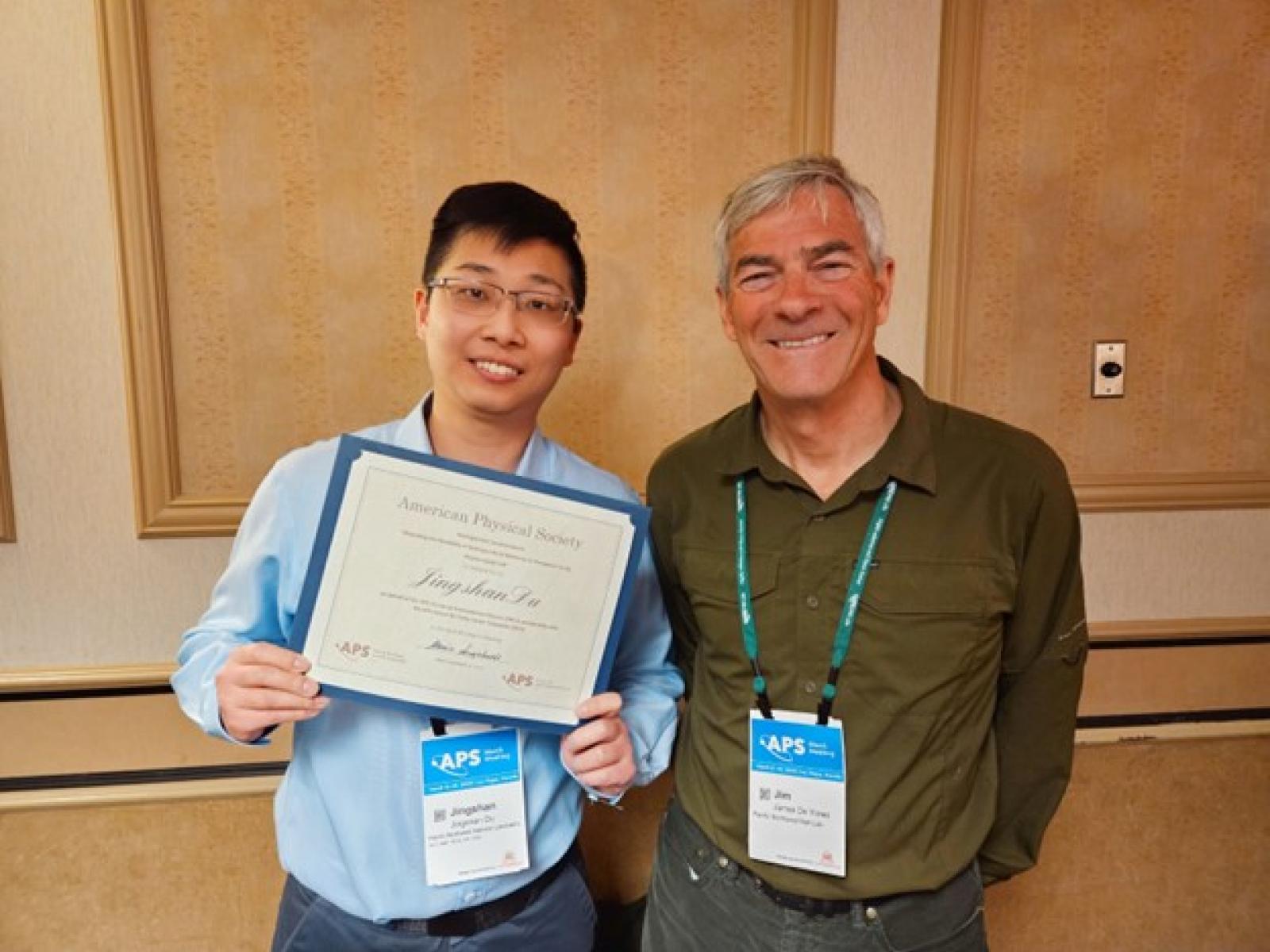Du Wins Distinguished Student Award
Postdoctoral researcher received award at the American Physical Society meeting

Jingshan Du, left, received a Distinguished Student Program award from the American Physical Society. Du is a postdoctoral researcher working under the mentorship of Jim De Yoreo, right.
(Photo courtesy of Jingshan Du | Pacific Northwest National Laboratory)
Jingshan Du, a Washington Research Foundation postdoctoral fellow at Pacific Northwest National Laboratory (PNNL), was selected for a Distinguished Student Award from the American Physical Society (APS). The award provides financial support for young, non-U.S. citizen researchers to attend APS annual meetings. Du attended the recent APS March meeting, where he received the award.
“I was so excited that APS broadened their criteria this year and allowed postdocs to apply,” said Du. “I was able to share our new breakthroughs in imaging nanoscale ice structures with atomic precision in a Focus Session talk. Beyond sharing my research, I also chaired a session on ‘Surfaces, Interfaces, and Materials.’ In the session, I met many scientists reporting their exciting results at the cross-section of chemical physics and materials science.”
The APS works “to advance and diffuse the knowledge of physics through its outstanding research journals, scientific meetings, and education, outreach, advocacy, and international activities.” The member-based organization has over 50,000 members across different aspects of physics and physics-related science. APS publishes 17 peer-reviewed research journals across physics disciplines.
The APS Distinguished Student Program, established in 2015, seeks to bring outstanding young researchers to the APS annual meetings. The program provides a travel award to help defray the cost of conference attendance for non-U.S. citizen researchers who reside either within or outside the United States. Previously open to graduate students, this year’s criteria allowed postdoctoral researchers to apply.
Du received a Washington Research Foundation Postdoctoral Fellowship in 2021. While at PNNL, he has studied how ice forms and behaves at the nanoscale. This work has required developing new imaging methods that work at the low temperatures where ice is stable. Enabled by these new techniques developed at PNNL, several types of defects in ice crystals have been imaged at atomic resolution for the first time. This provides critical information to help researchers understand nanoscale structures, bonding environments, and thermodynamics of ice.
Published: March 31, 2023